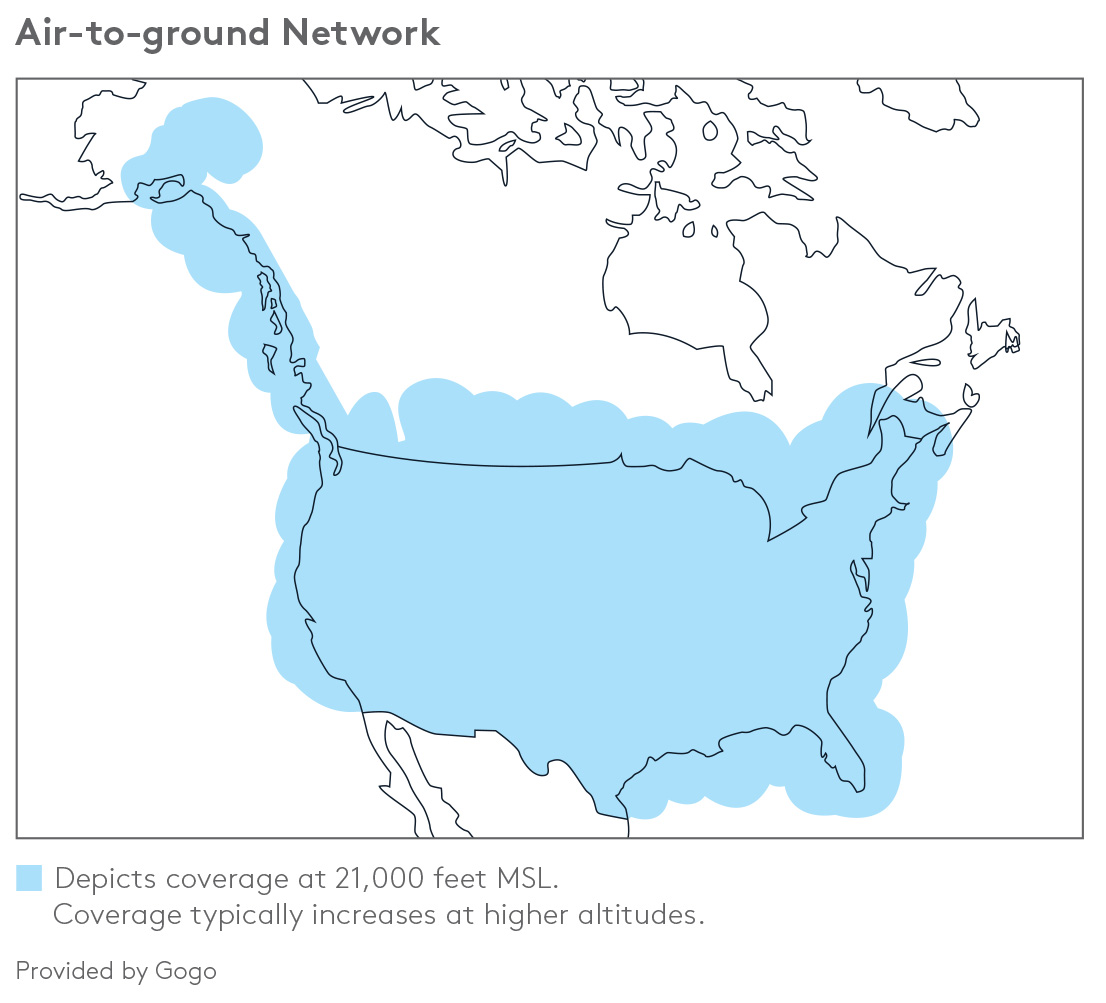What makes a modern air-to-ground network different from what we used to have, is that it is always there. It doesn't depend on the person in the aircraft knowing who is available on the ground able to receive that call.
— James Albright

Updated:
2017-09-15
- Air-to-Ground connectivity systems receive their signals from cell phone towers throughout the Continental U.S. and parts of Canada.
- Air-to-Ground aircraft antennas are typically two antennas on the underside of the aircraft. Some aircraft with 4G systems may have a single blade antenna.
- The most advanced air-to-ground systems are capable of speeds up to 9 MBPS.
- Aircraft will need to be above 10,000 feet to have good air-to-ground connectivity with ground transmitters.
In general, air-to-ground networks are good for:
- Continental U.S. and portions of Alaska and Canada
- Email with attachments
- Voice calls
- Texting
- VPN
- Internet browsing
- Up to 3.1 Mbps
Source: The Gulfstream Journal, September 28, 2018

References
(Source material)
The Gulfstream Journal, September 28, 2018, www.mygulfstream.com
Please note: Gulfstream Aerospace Corporation has no affiliation or connection whatsoever with this website, and Gulfstream does not review, endorse, or approve any of the content included on the site. As a result, Gulfstream is not responsible or liable for your use of any materials or information obtained from this site.
